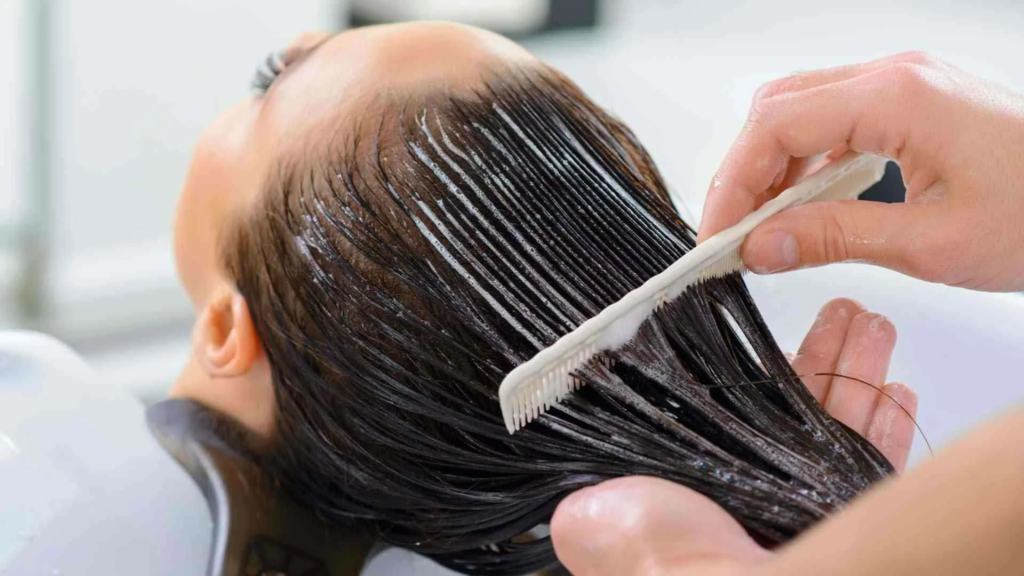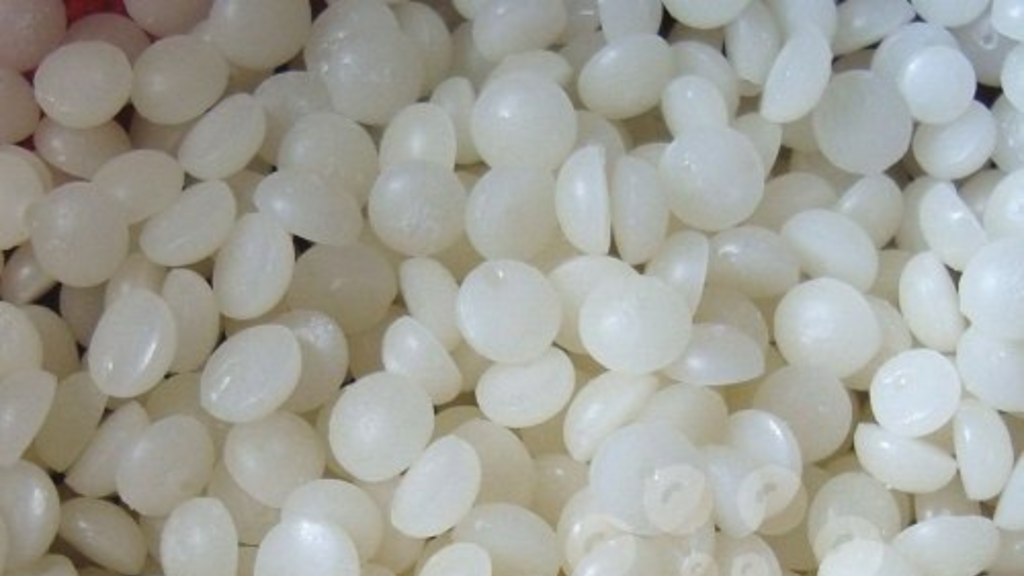BTMS-50 gives formulators exactly what they need – a plant-based conditioning emulsifier that works in almost any cosmetic creation. The usage rates of 1-15% make it perfect for both skincare and haircare products.
This conditioning emulsifier delivers results that other ingredients simply can’t match. The cationic emulsions create a soft, powdery feel that stays even after washing. Your formulations benefit from BTMS-50’s strong detangling power and deep penetration into skin and hair. The stable pH range of 5-7 and a melting point of 60°C (140°F) mean you’ll get reliable results every time.
This guide shows you the key properties of BTMS-50, how it works in hair care, and the exact techniques you need to use it right. You’ll learn everything about making BTMS-50 work in your formulations.
What Makes Up BTMS-50: Structure and Properties

BTMS-50 packs three powerful components into one ingredient. The main player, Behentrimonium Methosulfate, takes up 50% and handles all the conditioning work. Cetyl Alcohol makes up 35-45%, giving your products the right thickness and stability. The final 5-10% comes from Butylene Glycol, which keeps moisture locked in.
The magic of BTMS-50 comes from its rapeseed oil source – it’s actually a quaternary ammonium salt. The positive charge it carries sets it apart from regular emulsifiers. Your skin and hair love it because it hits the perfect pH sweet spot of 5-7 in a 2% solution.
BTMS-50 stands out because it hates water – thanks to its long molecular chain. This means it sticks around to condition without building up like other quaternary compounds. The emulsions you create with it won’t wash away easily.
Making BTMS-50 takes precise steps. First, palm oil reacts to create Cetyl Alcohol and palmitic acid. Then, rapeseed oil gives up its erucic acid, which gets transformed into Behentrimonium Methosulfate.
You’ll get the best results using BTMS-50 in formulas with 10-25% oils. Just remember – it fights with anionic ingredients like Xanthan Gum. Keep it cool, dark, and dry for the longest shelf life.
The science behind it all lies in the Behentrimonium Methosulfate structure (C26H57NO4S). It works so well because it has zero hydrogen bond donors and four acceptors – that’s what makes it play nice with other ingredients in your formulas.
How It Works and What It Does

BTMS-50 works better than standard conditioners because of its positive charge. The ingredient sticks right to negatively charged hair strands, creating a protective layer that makes hair more manageable.
The science behind BTMS-50’s conditioning power comes down to friction reduction. Hair strands glide past each other more easily, and static disappears. The ingredient coats each strand with a thin protective layer that works without making hair feel heavy.
BTMS-50 delivers three main benefits for your hair. The ingredient fights static by smoothing down hair cuticles – without the greasy feel you get from pure oils. Hair becomes easier to comb, both wet and dry. Plus, you’ll notice more body and bounce in your hair.
The ingredient works in pretty much any hair product you can think of. Use 1.0% to 5.0% BTMS-50 in rinse-off or leave-in products. Leave-in conditioners work especially well with this ingredient – they keep hair moisturized and healthy for hours.
BTMS-50 fixes specific hair problems too. Curly hair stays under control and won’t poof up when it’s humid. Thin hair looks thicker with regular use. High-porosity hair finally keeps its moisture.
The best part? BTMS-50 washes out clean and won’t damage your hair over time. Since it’s hypoallergenic and comes from rapeseed oil, it works great for people who want gentle but effective hair care. That’s why professional hair products rely on BTMS-50 – it simply works.
BTMS-50 Formulation: Getting It Right
BTMS-50 needs exact temperatures and careful handling to work right. Heat your BTMS-50 in the oil phase between 65-70°C. Taking it up to 80°C makes sure everything melts and mixes properly.
You’ll find two ways to create stable BTMS-50 emulsions. The first way uses two separate containers – heat both water and oil to 80°C, mix them fast for 10 minutes, then cool slowly. The second way puts BTMS-50 in water first, then adds oils – this helps everything blend better.
Different products need different amounts of BTMS-50:
- Rinse-off conditioners: 2-10%
- Solid conditioning bars: 2-20%
- Leave-in conditioners: 2-6%
Your oil phase should make up 10-25% of the total product.
BTMS-50 sometimes gives formulators trouble when melting. Grinding it smaller before heating helps speed things up. Adding extra Cetyl Alcohol makes your product thicker.
Test your products properly:
- Run three cycles between -10°C and 25°C, each for 24 hours
- For tougher testing, do five cycles between -10°C and 45°C
- Spin test at 3,000 RPM for 30 minutes after heating to 50°C
Remember these key points:
- Keep pH between 5.0-7.0
- Store everything in sealed containers somewhere cool and dry
- Use proper mixing equipment for better emulsions
BTMS-50 works great with Polawax as a co-emulsifier – you’ll get extra conditioning power. Follow these techniques and you’ll create stable products that really perform.
Final Thoughts

BTMS-50 gives formulators exactly what they need in a conditioning emulsifier. The plant-based ingredient proves itself time and again through both its unique properties and real-world applications.
The secret lies in its perfect blend of Behentrimonium Methosulfate, Cetyl Alcohol, and Butylene Glycol. These three ingredients create stable emulsions that condition hair and skin better than standard options.
BTMS-50’s positive charge makes it stick to hair strands while washing out clean. Hair stays manageable and static-free without any buildup. Professional formulators pick BTMS-50 because it simply works better than other options.
Getting great results means watching your temperatures, mixing phases right, and using the correct amounts. These details matter whether you’re making rinse-off conditioners, leave-in products, or solid bars.
This guide shows you everything about making BTMS-50 work in your formulas. The ingredient keeps proving itself as the go-to choice for modern hair care products that really deliver results.




